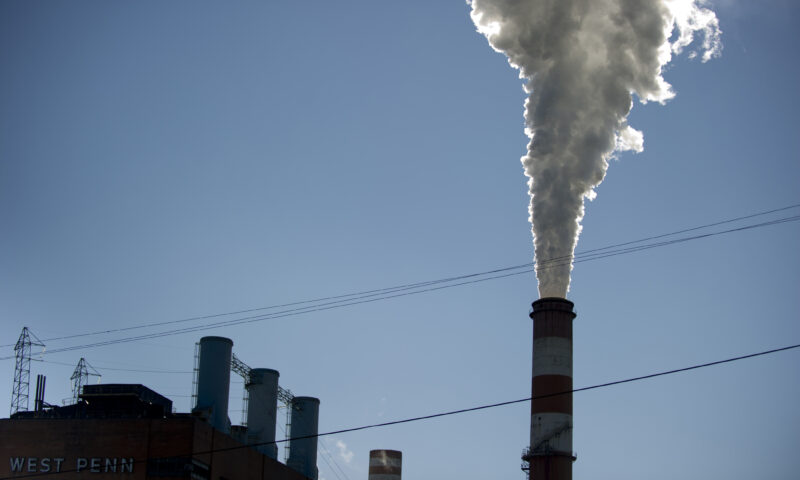Learning Curves
Homework Assignment: Defend Slavery
Studies Weekly found hundreds of instances of racial bias and inaccuracies within its teaching materials, which are used in several states.

“Learning Curves” is a weekly roundup of news items, profiles and dish about the intersection of education and inequality. Send tips, feedback and announcements of upcoming events to braden@capitalandmain.com, @BillRaden.
Abby Kingsley contributed to this column
California is one of eight states whose students were burned by a racially biased social studies periodical, according to Education Week. An internal review by Utah-based Studies Weekly, Inc. of its popular series of newspaper-formatted curriculum turned up hundreds of instances of offensive, historically inaccurate or age-inappropriate content. Flagged were characterizations of Native Americans as “savage” and “troublemakers,” and suggestions that indigenous peoples willingly traded away their homelands to Europeans. One African-American parent from Tennessee bitterly complained this year when a homework assignment required her fifth-grade daughter to write a defense of slavery.
But it was a February 2018 press flap over a Studies Weekly fantasy, in which a modern-day white fifth-grader orders her black schoolmate to pick cotton after they are magically transported to antebellum Georgia, that nudged the company to form a diversity review panel. “We have a tendency to either erase or whitewash our difficult history, and this seems to be an excellent example of the way that starts,” Maureen Costello, director of the Southern Poverty Law Center’s Teaching Tolerance project, told Ed Week. California’s subscription to Studies Weekly, which the state officially adopted in 2017 for use in all K-6 classrooms, will run through 2025.
Oakland Unified’s standing as the California poster child for charter oversaturation and Prop. 13 austerity took a hit on Monday when an Alameda County Grand Jury report laid part of the blame for OUSD’s chronic budgetary shortfalls squarely on its school board and administration. Coming on the heels of a contentious board vote for over $20 million in draconian program cuts and layoffs, the report blasted the fiscally teetering district for a breakdown in “sound business practices” that has allowed the routine flouting of competitive bidding, the flourishing of a “what’s in it for me” culture, and that has added millions of dollars to its already crippling deficits. The bottom line? OUSD consistently spends a lot more on central staff, administrative programs, and contracting and consultant services than comparable districts.
“It affirms many of the things we’ve been yelling about for years,” Oakland Public Education Network (OPEN) organizer Mike Hutchinson told Learning Curves. “Like the fact that Oakland receives more per pupil than almost any other school district in Northern California, but we spend a lot less on pupils.” Attributing much of what’s broken to senior staff churn, Hutchinson reserved his harshest words for OUSD trustees: “In the end, no matter how much money you give them, they will waste it in mismanagement. So the only solution for Oakland is to vote in a new board in 2020.”
Inequities continue to dampen the prospects for getting a $13 billion school construction bond on the 2020 California ballot, despite it sailing through the State Senate Education Committee last week. Assembly Bill 48 also slates a still-undetermined followup bond for 2022. In the current School Facility Program (SFP) funding formulae, the state foots half the costs of new schools and 60 percent of renovations; districts pay the difference by raising local general obligation bonds through local property taxes. But last year’s PACE/Stanford University Getting Down to Facts II study called for reforms after finding that dramatic disparities in district shares of state construction money were largely a function of wealth. The culprit? The SFP for renovations, whose complex, first-come, first-served hoops heavily favored high-property-value districts to grab off bigger state funding simply by being able to issue pricier matching bonds.
Though it is too late to make substantive fixes for 2020, AB 48 author Patrick O’Donnell (D-Long Beach) said that placeholder language in the bill can accommodate the necessary fixes for 2022. What he can’t do, however, is guarantee the legislature will follow though. That’s led the League of Women Voters, the ACLU and student advocacy groups Public Advocates and the Advancement Project to withhold support until the requisite writing is on the wall.
Copyright Capital & Main

-

 Latest NewsNovember 19, 2025
Latest NewsNovember 19, 2025How Employers and Labor Groups Are Trying to Protect Workers From ICE
-

 The SlickNovember 18, 2025
The SlickNovember 18, 2025After Years of Sparring, Gov. Shapiro Abandons Pennsylvania’s Landmark Climate Initiative
-

 StrandedNovember 25, 2025
StrandedNovember 25, 2025‘I’m Lost in This Country’: Non-Mexicans Living Undocumented After Deportation to Mexico
-

 Column - State of InequalityNovember 21, 2025
Column - State of InequalityNovember 21, 2025Seven Years Into Gov. Newsom’s Tenure, California’s Housing Crisis Remains Unsolved
-

 Column - State of InequalityNovember 28, 2025
Column - State of InequalityNovember 28, 2025Santa Fe’s Plan for a Real Minimum Wage Offers Lessons for Costly California
-

 The SlickNovember 24, 2025
The SlickNovember 24, 2025California Endures Whipsaw Climate Extremes as Federal Support Withers
-

 Latest NewsDecember 8, 2025
Latest NewsDecember 8, 2025This L.A. Museum Is Standing Up to Trump’s Whitewashing, Vowing to ‘Scrub Nothing’
-

 Latest NewsNovember 26, 2025
Latest NewsNovember 26, 2025Is the Solution to Hunger All Around Us in Fertile California?

